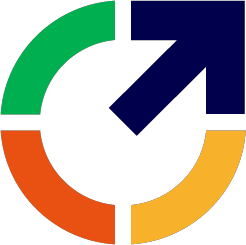Maximizing Your SAP ERP Investment: Tips and Best Practices
A SAP Enterprise Resource Planning (ERP) system is a significant investment for any organization. But purchasing an ERP solution by itself won’t be enough. If you want to maximize the return on your ERP investment, you must have a well-thought-out plan that is in line with your corporate goals. Besides, it is crucial to adopt best practices and strategies that maximize its value. Here are a few key tips, to help you optimize your SAP ERP implementation.
Establish Clear Goals and Objectives
Before embarking on an SAP ERP implementation, it is essential to establish clear goals and objectives. Define what you want to achieve with the system, such as streamlining business processes, improving productivity, or enhancing data accuracy. According to a study conducted by Panorama Consulting, organizations that clearly define their goals during implementation have a higher likelihood of success, with 94% of respondents reporting a positive ROI.

Engage Key Stakeholders
A case study by Deloitte showed that involving stakeholders resulted in a 58% increase in project success rates. Engaging key stakeholders throughout the SAP ERP implementation is vital for its success. Stakeholders, including executives, department heads, and end-users, should be involved from the early stages of the project. Their input ensures that the system meets the needs of various departments and maximizes user adoption.
Leverage Change Management Strategies
A study by Prosci found that projects using effective change management practices were six times more likely to meet objectives. Implementing SAP ERP brings about significant changes to business processes and workflows. To minimize resistance and maximize user adoption, organizations must prioritize change management. Change management should include comprehensive communication plans, training programs, and ongoing support to help employees adapt to the new system.
Embrace Standardization and Process Optimization
According to a study by Aberdeen Group, organizations that implement standardization and process optimization achieved a 17% reduction in operating costs. SAP ERP offers a wide range of modules and functionalities. To fully capitalize on your investment, it is crucial to embrace standardization and optimize business processes. Standardizing processes across departments not only improves efficiency but also enhances data integrity and facilitates accurate reporting.
Integrate Data and Systems
Integrating data and systems with your SAP ERP solution is essential for real-time visibility and enhanced decision-making. By connecting your ERP system with other applications, such as customer relationship management (CRM) or supply chain management (SCM), you can create a seamless flow of information. Research by IDC shows that organizations that integrate their ERP systems achieve an average of 15% increase in productivity.
Continuously Monitor and Evaluate Performance
A leading retailer could improve supply chain efficiency by 20% through continuous monitoring and optimization by implementing a comprehensive system for monitoring and optimizing their supply chain processes. Through real-time tracking of inventory, demand forecasting, and proactive identification of bottlenecks, they were able to streamline their operations This enabled them to reduce lead times, optimize inventory levels, and enhance overall customer satisfaction.
Maximizing your SAP ERP investment is an ongoing process. Regularly monitoring and evaluating system performance is crucial to identify areas for improvement and ensure that your ERP system continues to meet your evolving business needs. Leveraging analytics and reporting tools within SAP ERP enables you to gain insights into key performance indicators (KPIs) and make data-driven decisions.
Stay Up-to-Date with SAP Enhancements
SAP continuously releases enhancements and updates to improve system functionality and address emerging business challenges. Staying up-to-date with these enhancements ensures that your organization benefits from the latest features and optimizations. A study by Forrester Research found that organizations that regularly updated their SAP ERP systems achieved a 22% increase in user productivity.
Conclusion
Maximizing your SAP ERP investment requires a strategic and proactive approach. By following these best practices, supported by relevant statistics and case studies, you can optimize your SAP ERP implementation and drive tangible business value. From setting clear goals and engaging stakeholders to embracing standardization and continuous monitoring, each step plays a vital role in maximizing the return
Get more insights on the topic from our blog: Maximizing ROI with SAP Cloud Solutions – Ikyam. Ikyam Solutions can help you navigate your digital transformation journey: https://ikyam.com/


